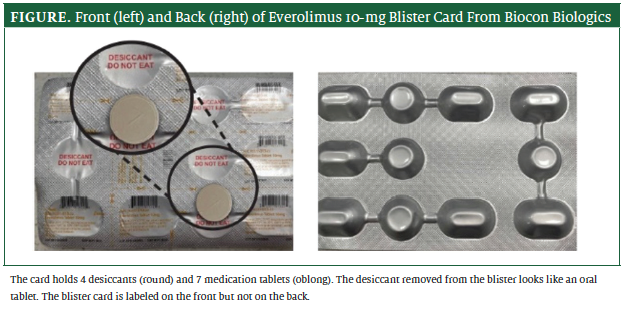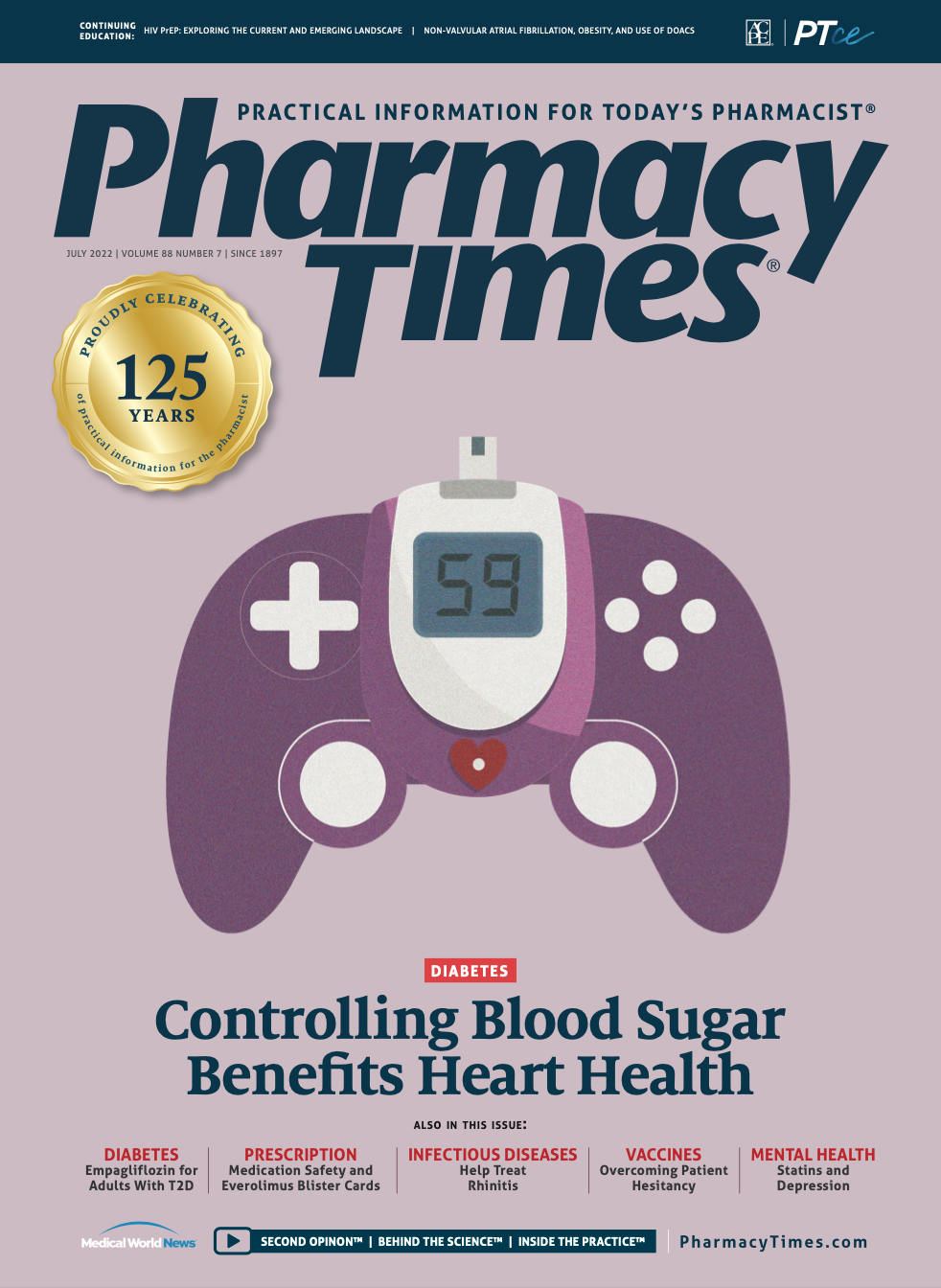Publication
Article
Pharmacy Times
Patients Swallow the Desiccants in Everolimus Blister Cards
Author(s):
Mark these products for mandatory patient education on the cartons and in the pharmacy computer system.
The Institute for Safe Medication Practices (ISMP) has received reports about patients swallowing desiccant tablets that are packaged within blister cards holding everolimus tablets from Biocon Biologics.
Everolimus is used primarily to prevent rejection after liver or renal transplant and to treat certain forms of breast or renal cancer and noncancerous fat and muscle tumors in the kidney (renal angiomyolipoma). The medication is available in 2.5-, 5-, 7.5-, and 10-mg tablets. Each strength is packaged as a carton of 4 blister cards, and each blister card has 4 blisters containing desiccant tablets and 7 blisters containing everolimus tablets. The desiccant blisters are labeled with “Desiccant Do Not Eat” (Figure), but this warning is printed on only 1 side of the blister card; the other side contains no wording. Patients viewing the blank side of the blister may push a desiccant tablet through without realizing it. Although the desiccant tablets look different from the everolimus tablets, they can still be easily mistaken for medication-containing tablets. Thus, patients have accidentally ingested a desiccant tablet instead of an everolimus tablet.
Since February 1, 2021, the ISMP National Medication Errors Reporting Program and the FDA Adverse Event Reporting System have received 13 reports related to this issue. Although at least 8 manufacturers provide everolimus tablets in blister packaging, all the reports submitted to the FDA and ISMP involve the product from Biocon Ltd, which is the only company that packages desiccants with the tablets in blister cards. The cases frequently involved older patients for whom poor vision may have contributed to the confusion. Furthermore, the small font size and light tan color of the drug name and dose on the labeled side of the card are difficult to see on the foil blisters (Figure).

Two patients almost ingested the desiccant. In one case, a non–English-speaking patient became confused about the desiccant blisters and thought he was supposed to swallow them along with the medication. Luckily, he called the pharmacy, and the pharmacist was able to communicate with the patient to avert an error. The other 11 patients ingested the desiccant, often for several doses. In 2 cases, parents administered the desiccants to their children. One mother questioned whether her child’s recent facial erythema was related to ingesting the desiccant after discovering she had administered the desiccant to her child at least 6 times. Another patient took all 4 desiccants in the blister pack and went to the emergency department for chest pain. It is worth noting that the everolimus product labeling and the information that accompanies the medication dispensed to patients provide no information about the desiccants or what to do if they are swallowed.
Biocon told the ISMP that the desiccants in everolimus blisters are chemically inert, nonhazardous, and nontoxic. They are a moisture-absorbing mixture of molecular sieve, polypropylene resin, white colorant, and a trade-secret binder.
The desiccant tablets are not absorbed or digested, passing through the body as is, according to the manufacturer. Still, keep in mind that patients swallowing a desiccant tablet may also miss a dose of their scheduled cancer or immunosuppressant medication, which could affect treatment.
Safe Practice Recommendations
Because many practitioners will never open the Biocon everolimus carton to see the individual blister cards, it is important to alert them to the blister-card labeling issue so that they are aware of the potential for patients to ingest the desiccant tablets.
In the pharmacy computer system and on the cartons, mark these products for mandatory patient education. When educating patients upon discharge, it is critical to tell them that these blister cards contain desiccants that might be mistaken for tablets. Consider opening the carton to show patients the blister cards. Warn patients to never eat or swallow a desiccant.
Additionally, remove desiccant cylinders from medication bottles when possible; if the desiccant must remain in the bottle, warn patients about the hazards associated with swallowing it.
The ISMP has reached out to Biocon Ltd and the FDA to express concern with everolimus labeling so that they can take steps to properly address the above issues.
About the Author
Michael J. Gaunt, PharmD, is a senior director of error reporting programs at the Institute for Safe Medication Practices in Horsham, Pennsylvania.






